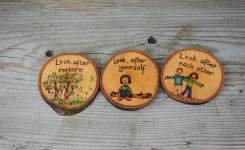FAQ's
Winter Solstice – 5 Facts to know
Our journey to be more environmentally friendly in our business stemmed from really wanting to provide a better service to people. To see people as complete, complex and unique. And the questions started. What do people need? What do they want? What makes a person a person? All these questions started a journey that challenged the very business framework, environmental approach and customer interaction we had learned previously.
We started to look at all the things that effect people including the influences of nature and nurture. A huge natural factor is the sun. it affects us in ever increasing ways. Provides heat, light, cycles of night and day and seasonal changes that have shaped our very existence and continues to impact our day to day lives with increasing significance. Energy, temperature, weather, moods, wellbeing, crops, biodivesity and more.
So what is a solstice got to do with all?
Winter Solstice
1.TILT MATTERS
Although there are many factors that determine the behavior of each planet — there's only one that determines when the solstices are: axial tilt.
Axial Tilit
As our planet revolves around the sun, it rotates on its horizontal axis. Along with the rotation there is also a noticeable tilt along its vertical axis. This vertical tilt varies throuout the year creating our seasons.
2. What is Solstice?
The word solstice is derived from the Latin sol ('sun') and sistere ('to stand still'), solstitium meaning ‘standing still of the Sun', because the apparent movement of the Sun's path north or south stops before changing direction.
Solstice = Stillness
At the winter solstice, the apparent position of the Sun reaches its most southerly point against the background stars and appears to stay closer to the horizon.
3. Start Or Mid Winter?
Is Solstice the start of winter or the middle of winter?
Is Solstice the begining of winter or the mid point of winter?
Well that rather depends who you speak to. In more recent years we have become accustomed to an average temperature drop following the Solstice so many take the view that it marks the start of the coldest spell.
Well this seems to depend on WHY you are studying the seasons.
The meteorological approach splits the year into four seasons of three full months each based on the Gregorian calendar, which makes it easier to compare seasonal and monthly statistics. Under this system, every year winter begins on 1 December and lasts until the end of February, giving way to the arrival of spring on 1 March. The astronomical season isn't quite as straightforward because the first day of winter falls on the date of the winter solstice which can vary slightly from year to year. In 2019, winter solstice falls on 22 December for the first time in four years – it can occur any date between 20 and 23 December, but usually takes place on the 21st of the month. This astronomical winter will last until 20 March 2020, the date of the spring (or vernal) equinox in the Northern Hemisphere. However, the solstice can also be known as Mid-Winter because the days begin to get longer after it has passed. I personally prefer this view as it focuses on what matters most to me. Daylight hours and warmth so feel free to choose the view that suits your needs but we must also remember that the short sunlight hours of the solstice brings an onset of colder temperatures before the spring occurs
4. What Time?
Is there a specific time when the sun starts moving northwards on our horizon again?
04:19 AM
Yes in fact on 22 December this year, London is set to see a paltry 7 hours, 49 minutes of daylight, with the sun rising at 8.04am and setting at 3.53pm. The actual moment of the solstice will occur around 04.19am in the UK, but most people concentrate on the whole solstice day, which has been recognised by holidays and festivals in many cultures all over the world. For a brief moment the earth's North / South movement stops still.
5. Celebrations
How is winter solstice celebrated? It is no coincidence that the winter solstice, falls so close to Christmas, on December 25th. Rome chose this date for Christ’s birth around the fourth century, after many previous date changes ranging from January to April. And even now, some Orthodox churches celebrate Christmas in January. The date chosen for Christmas coincided with several winter festivals observed across the Roman Empire that included Winter Solstice, Yule and Saturnalia. Different aspects of these appear to have been absorbed into the Christian celebration of Christmas.
Yule Tide Festivals
The origins of Christmas trees and wreaths, for example, can be found in the 12-day holiday of 'Yule', which centred around the solstice. This festival was observed by the early Germanic peoples of Northern Europe, who gathered to celebrate the the revival of the sun and the brighter times ahead. Celtic druids would mark the solstice with the cutting of mistletoe and lighting a 'Yule log', believed to banish darkness and evil spirits.
Saturnalia
Romans had their own similar observance called Saturnalia (in honour of the god Saturn ‘father of the gods’), which began on 17 December and involved a full week of partying. The usual law and order would be suspended, schools and businesses would close, and quarrels would be forgotten. People decorated their homes with wreaths and greenery, and shed their traditional togas in favour of colorful clothes
Dongzhi Festival (Asia)
In China and East Asia, the Dongzhi Festival is one of the most important times of the year. It celebrates the return of longer daylight hours and ultimately an increase of positive energy. The festival’s origins can be traced back to the yin and yang philosophy of balance and harmony.
Yalda (Iran)
Shab-e Yalda ‘Yalda night’ or Shab-e Chelleh ‘night of forty’ is an Iranian festival celebrated on the ‘longest and darkest night of the year’. Friends and family get together to eat, drink and read poetry until the early hours. Pomegranates and watermelons are particularly significant.
Stone Circles
Stonehenge is one of the better known of these structures. It has been shown to mark the summer and winter solstices. Newgrange, in Ireland, and Maes Howe, in Scotland, are both large enclosed circular structures with a long passageway, not unlike the birth canal attaching to the womb. At noon on the winter solstice in both locations a shaft of light travels down the canal and illuminates a point at the back of these structures, which are marked by a spiral. There is no mistaking the deliberateness of this construction indicating something very significant about the sun at Winter Solstice. At Stonehenge people arrive late on the night of solstice to catch the sunrise. The main features of the Stonehenge site date from the centuries around 3500 BC. We can only speculate about what it meant to the ancients. Certainly there was a lot of long term planning and physical labor involved, since these structures were built over hundreds of years. And we really don’t know how these structures were used.
The Solstice Renewal
The idea of renewal or resurrection is a provocative one. It is not new, of course, but still holds a significant place in our imaginations. Surely, our holiday celebrations contain some of what is left of the rituals of the ancients. Perhaps it is the outer shell of some greater understanding, a mystery to contemplate. Whatever the case, it seems that the very act of taking time out of our busy schedules to celebrate with the ancient origins of the holiday is a beneficial one. And if you find yourself with a little extra time on December 22nd, consider that these ressurections are constant and often in rhythm like a breathing lung or beating heart. We sleep and awake. Sun shines and fades and possibly we each experience our own resurrection cycle. What ideas, beliefs or habits need to be let go of and what needs to be reborn. As the sun once again sends that shaft of light down the long corridors of Newgrange and Maes Howe, signaling the end of a cycle and the start of a new one. There is a barley perceptible stillness as the earth literally stops at the apex of its tilt and begins the journey back to summer with renewed energy. Enjoy the ride..






